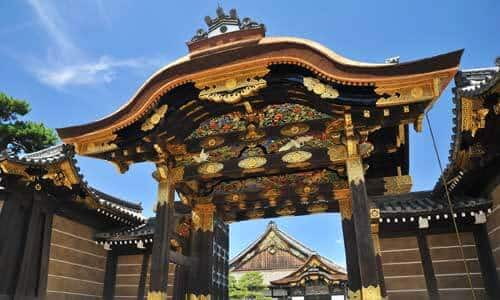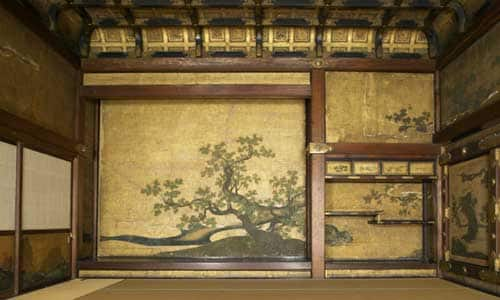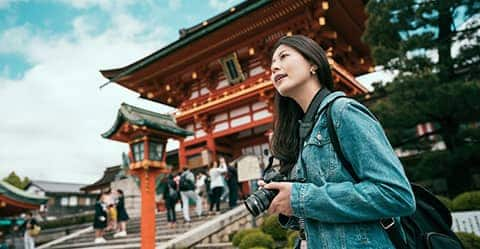- Culture
- Kyoto
Former Imperial Villa Nijo-jo Castle

©Nijo-jo Castle
Living proof of the rise and fall of the Tokugawa Shogunate
Located in the center of Kyoto City, Nijo-jo Castle grounds cover a vast area 500 meters east to west and 400 meters north to south. This castle was first established in 1603 by Tokugawa Ieyasu, the first Shogun of the Edo Government, as his residence. The grounds were expanded to their current size with the extension of the Ninomaru Palace in 1626. Steeped in history, this place bore witness to a number of historic events, including the return of power to the Emperor by Tokugawa Yoshinobu, the last Shogun of the Edo Government, in 1867. More than 400 years have passed since its establishment, and it still maintains and displays a number of highly decorative historical architectural items and artworks, including the Ninomaru Palace, Ninomaru Garden and Karamon Gate.

©Nijo-jo Castle
Karamon Gate
The Karamon Gate is the front gate to the Ninomaru Palace and underwent extensive restoration work which was completed in 2013. The gate, with its impressive roof made of cypress bark, has four thick pillars bearing different carvings with amazing designs, such as butterflies with camellias, dragons and tigers. This National Important Cultural Property is open to the public on a regular basis.

©Nijo-jo Castle
Tozamurai and Kurumayose in the Ninomaru Palace
After going through the Karamon Gate, you will reach the Ninomaru Palace, a National Treasure constructed during the early years of the Edo Period (1603-1868). Tozamurai is the largest section of the palace, which was used as a waiting area for visitors, and Kurumayose is the entrance area, which is adorned with impressive elaborate carvings below the roof, still retaining their vivid colors to this day. The Ninomaru Garden was renovated by Kobori Enshu (a prominent tea master and gardener in the Edo Period) in 1626 in preparation for receiving Emperor Gomizuno. It is recognized as one of the most outstanding examples of existing castle gardenworks.

Chokushi-no-ma (Imperial Messenger's Room) in the Ninomaru Palace
There are six sections in the Ninomaru Palace, each of which has exquisite paintings on the sliding doors and partitions. These artworks are believed to have been created by the Kano School during the 15th to 19th centuries, the largest artist group of Japanese painting. Their style, as well as that for their elaborate carvings, exhibits the extravagance befitting the palace of the shogun and transcends the culture of that time to the present, giving the rooms the look of an art museum. The Chokushi-no-ma in the photo is a room in the Tozamurai section, which was used to receive messengers from the Imperial court. Its doors and walls have outstanding pictures of cypress and green maple trees.
Location
| Name | Former Imperial Villa Nijo-jo Castle |
|---|---|
| Website | http://nijo-jocastle.city.kyoto.lg.jp/?lang=en |
| Address | 541 Nijojo-cho, Horikawa-nishi-iru, Nijo-tori, Nakagyo-ku, Kyoto-shi, Kyoto |
| Access | A short walk from Nijojo-mae Station on the Tozai Line subway |
| Inquiries | TEL: 075-841-0096 |







